Foot Care in Diabetes
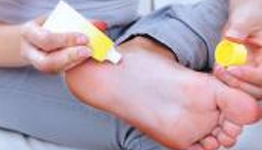

People who have diabetes are more likely to have problems with poor blood flow (circulation) or loss of feeling (sensation) in their feet, which may lead to sores that are slow to heal. This is caused by damage to the nerves in the lower legs and feet. This nerve damage occurs as a result of blood sugar levels that have been high over a long period of time.
- Diabetes can cause damage to the blood vessels and nerves leading to severe foot problems.
- About 15% of people with diabetes will develop a serious diabetic foot problem in their lifetime
- Most hospital admissions for people with diabetes are for foot problems
How can diabetes affect the feet?
- Loss of sensation (peripheral neuropathy)
- Injuries occur without pain
- People delay seeking help
- Peripheral neuropathy also contributes to muscle weakness and foot deformities
- Poor circulation
- Pain in calf muscles when walking or climbing stairs/incline
- Burning pain in feet at night
- Poor healing of wounds on the feet and legs
- Stiffening of the joints
- Muscle weakness
- Foot deformities
- Skin changes
- Slower healing due to high blood sugar
Who is most at risk of diabetic foot problems?
Risk factors include:
- Long duration of diabetes
- Advanced age
- High Blood sugar levels
- Poor circulation
- Smoking
- Alcohol abuse
How do you know if you are at risk of serious diabetic foot problems?
Have your feet assessed once a year by your doctor as part of your diabetes check-up, or by a podiatrist.
Doctors will be checking the following to assess the risk.
- Check for nerve damage
- Check for poor circulation
- Examine feet for skin, joint and nail problems
- Assess footwear
Steps for taking care of your feet
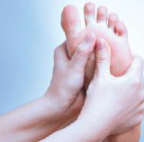
- Check your feet every day.
- Check your feet for cuts, sores, red spots, swelling, and infected toenails. You may have foot problems, but feel no pain in your feet. Make checking your feet part of your everyday routine and look between your toes.
- Check your feet each evening when you take off your shoes.
- If you have trouble bending over to see your feet, use a mirror to help. You can also ask a family member or caregiver to help you.
- Check for any hot spots. Place the back of your palm to feel any hot spots.
- Wash your feet every day.

- Wash your feet in warm, not hot, water. Do not soak your feet because your skin will get dry afterwards.
- Before bathing or show-ering, test the water to make sure it is not too hot. You can use a thermometer (90° to 95° F is safe) or your elbow to test the water.
- Dry your feet well. Use talcum powder or cornstarch to keep the skin between your toes dry to prevent infection.
- Keep the skin soft and smooth.
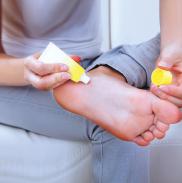
- Apply a thin coat of mois-turising cream on the tops and bottoms of your feet.
- Do not put lotion or cream between your toes because this might cause an infection.
- Smooth corns and calluses gently.
Thick patches of skin called corns or calluses can grow on the feet. If you have corns or calluses, check with your foot doctor about the best way to care for them.
- Do not cut corns and calluses.
- Do not use razor blades, corn plasters, or liquid corn and callus removers - they can damage your skin and cause an infection.
- If you can see, reach, and feel your feet, trim your toenails regularly.
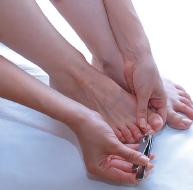
- Trim your toenails with nail clippers after you wash and dry your feet.
- Trim your toenails straight across and smooth the corners with an emery board or nail file. This prevents the nails from growing into the skin.
- Do not cut into the corners of the toenail.Consult a podiatrist for your toenails if:
- You cannot see or feel your feet
- You cannot reach your feet
- Your toenails are thick or yellowed
- Your nails curve and grow into the skin
- Wear shoes and socks at all times.
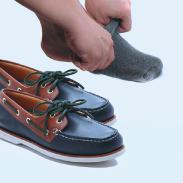
- Wear shoes and socks at all times. Do not walk barefoot when indoors or outside. It is easy to step on something and hurt your feet. You may not feel any pain and not know that you hurt yourself.
- Make sure you wear socks, stockings, or nylons with your shoes to keep from getting blisters and sores.
- Choose clean, lightly padded socks that fit well. Socks that have no seams are best.
- Check inside your shoes before you put them on. Make sure the lining is smooth and that there are no objects in your shoes.
- Wear shoes that fit well and protect your feet.
- Protect your feet from hot and cold.
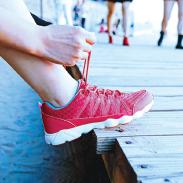
- Wear shoes at the beach and on hot pavement. You may burn your feet and may not know it.
- Put sunscreen on the top of your feet to prevent sunburn.
- Keep your feet away from heaters and open fires.
- Do not put hot water bot-tles or heating pads on your feet.
- Wear socks at night if your feet get cold.
- Wear lined boots in the winter to keep your feet warm.
- Keep the blood flowing to your feet.

- Put your feet up when you are sitting.
- Wiggle your toes for 5 minutes, 2 or 3 times a day. Move your ankles up and down and in and out to help blood flow in your feet and legs.
- Do not cross your legs for long periods of time.
- Do not wear tight socks, elastic, or rubber bands around your legs.
- Do not smoke. Smoking can lower the amount of blood flow to your feet.
- Be more active.

- Being active improves blood flow to the feet. Ask your health care team for safe ways to be more active each day. Move more by walking, dancing, swimming, or going bike riding.
- If you are not very active, start slowly.
- Find safe places to be active.
- Wear athletic shoes that give support and are made for your activity.
- Take care of your diabetes.
- Work with your health care team to make a plan to manage your diabetes.
- Ask your health care team to help you set and reach goals for managing your blood sugar, blood pressure, and cholesterol.
- Ask your team to help you choose safe ways to be more active each day and choose healthy foods to eat.
Tips for Choosing the Right Footwear
Wearing the right type of shoes is important for keeping your feet healthy. Walking shoes and athletic shoes are good for daily wear.
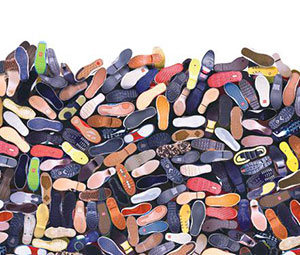
- Never wear vinyl or plastic shoes, because they do not stretch or “breathe.”
- When buying shoes, make sure they feel good and have enough room for your toes.
- Do not wear shoes with pointed toes or high heels often. They put too much pressure on your toes.
- Buy shoes at the end of the day when your feet are the largest so that you can find the best fit.
Special footwear:
You may need special shoes or shoe inserts to support your feet.
- Depth shoes or inserts. Depth shoes look like walking shoes, but have more room in them. The extra room is for different shaped feet and toes, or for inserts made to fit your feet.
- Custom molded shoes with inserts.
Our Podiatrist (foot doctor) can help you get this special footwear.
Things to remember:
- Set a time every day to check your feet.
- Wear socks and shoes at all times.
- Seek help EARLY for any foot problem if you have diabetes
- Write down the date of your next visit to the doctor.
- Remember when visiting your health care provider; always remove your shoes and socks to remind them to check your feet.
- Set a date for getting the things you need to take care of your feet: nail clippers, emery board, skin lotion, talcum powder, plastic mirror, socks, walking shoes and slippers.
- Stop smoking.
- Manage your diabetes so you can prevent foot problems.
Diabetes management at NMC Royal Hospital Sharjah
We follow a structured plan, which is evidence based and personalized to suit our individual patient’s needs.
Our qualified team of endocrinologists, Diabetes Educators & Dieticians can help you with:
- Prescribing medications that are best suited for each patient
- Providing detailed explanations of the side effects and contraindications of the medicine
- Counselling with regards to lifestyle modifications, Diabetes monitoring & diet.
Our Podiatrist (foot doctor) can help you with:
- Consulting you on feet care
- Identifying feet problems
- Getting special footwear



